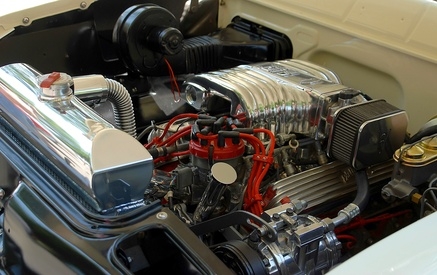
A head gasket is the part of an automobile engine that forms a seal between the engine block and cylinder head, sealing the combustion chambers and protecting leaks of the coolant and oil that run through the two. Damage to the head gasket can be caused by the engine overheating, resulting in swelling of the cylinder head which breaks the seal of the head gasket. You have two ways to resolve this problem.
The quickest, easiest approach to fixing a cracked head gasket is to use one of the many liquid engine block sealing products on the market that promises to fix such leaks. This liquid will flow through the radiator to the cylinder head and engine block, reacting with the heat to become solid and seal the cracks. This would involve draining the anti-freeze or coolant from the radiator by opening the valve on the bottom of the radiator to allow the liquid to flow out and then flushing it with a flush and fill kit. The flush and fill kit contains a chemical liquid to pour into the radiator to flush it and the coolant system of remaining deposits after draining. Also in the kit is the liquid coolant used to refill the radiator when you finish with the sealant process. Once you finish with the flushing chemical, fill the radiator with water and the liquid sealant. Idle or drive your vehicle for about 30 minutes. This gives the sealant time to warm. With the help of the engine heat, it will become solid, forming a seal with the gasket to close the cracks. You would then drain the radiator, let it dry for 24 hours, flush it with water again and fill it with a 50/50 coolant and water mix.
The more difficult option would be to replace the head gasket. Because engines differ depending on the make, model and year, you need to consult your vehicle's service manual before attempting to reach the head gasket. In addition to draining the radiator, you would have to remove the intake manifold, the exhaust manifold, the valve train and the cylinder head just to get to the head gasket. This process would also involve disconnecting a number of wires, sensors, bolts and the ignition system. You then would check the cylinder head and fix it if it is warped. A warped cylinder head needs to be ground down even with an electric sander, so that it fits smoothly into the head gasket. If it is cracked, it must be replaced. Finally, you would need to replace everything you removed and make the correct adjustments so your engine functions properly.
Without the proper knowledge or level of mechanical experience, trying to replace the head gasket yourself is not be a good idea. Many cracked head gaskets can be fixed with the sealants.